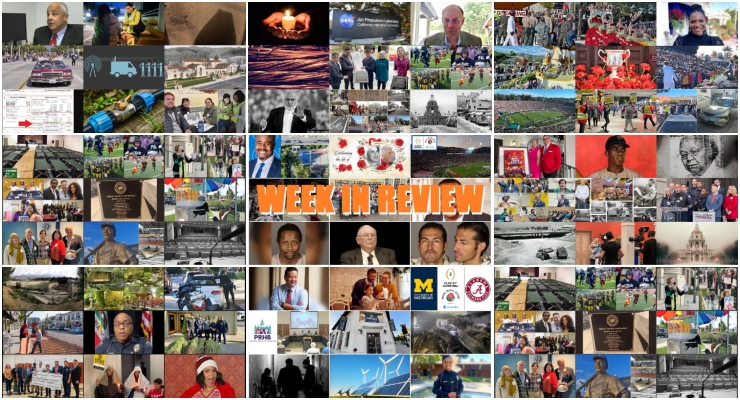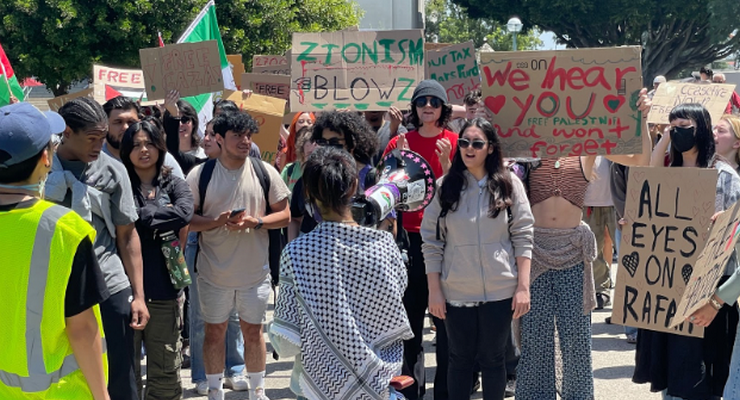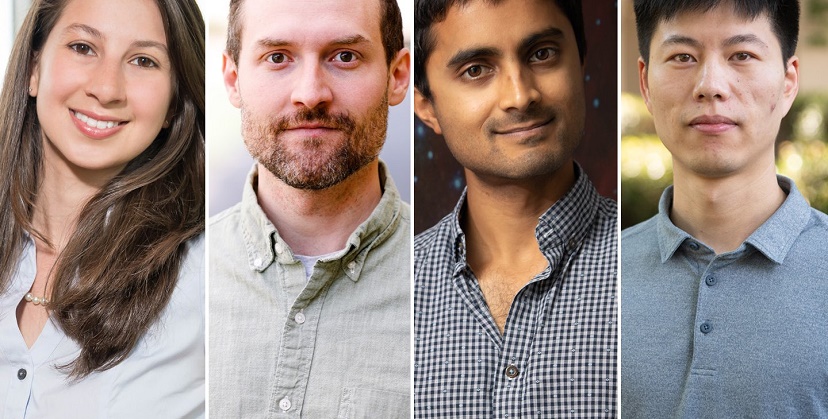
Slow Fellow 2024 (l-r): Katie Bouman, Lee McCuller, Vikram Ravi, Antoine Song. Credit: Caltech
Four Caltech faculty members have been awarded the prestigious Sloan Research Fellowship for 2024: Katie Bouman, assistant professor of computing and mathematical sciences, electrical engineering and astronomy; Lee McCuller, assistant professor of physics; Vikram Ravi, assistant professor of astronomy; and Antoine Song, assistant professor of mathematics.
The fellowships honor exceptional U.S. and Canadian researchers “whose creativity, innovation, and research accomplishments make them stand out as the next generation of leaders,” according to the Alfred P. Sloan Foundation, which has been granting the awards annually since 1955. The Caltech professors are among 126 early-career scientists who have been selected to receive the fellowships, which come with $75,000 over two years to advance research projects.
Katie Bouman is a computational imaging scientist whose methods combine ideas from signal processing, computer vision, machine learning, and physics to bring out hidden signals in scientific and technical data. She is a key member of the Event Horizon Telescope project, which made history in 2019 by unveiling the first image of a black hole, in this case, a supermassive black hole lying at the heart of the M87 galaxy. Using data acquired by a global network of radio telescopes, Bouman and her teammates developed a computational approach that transformed the black hole data into an image. Since then, her team has helped produce an image of the supermassive black hole at the heart of our Milky Way Galaxy, called Sagittarius A*, as well as a new image of the M87 black hole made with enhanced data. Bouman is also developing next-generation computational cameras for other imaging problems in astronomy, medicine, and seismology, where traditional cameras will not work.
Lee McCuller is an expert at creating technologies that make the most precise measurements in the world. These quantum measurements are at the heart of the Laser Interferometer Gravitational-wave Observatory(LIGO), which has been detecting gravitational waves from colliding black holes and neutron stars since it first detected ripples in space-time in 2015. McCuller helped lead the development of essential technology at LIGO based on a concept called quantum squeezing. This method helps reduce unwanted noise in LIGO’s detectors—noise that bubbles up from the quantum realm—to make the facilities even more sensitive to gravitational waves. Recently, Lee and his LIGO collaborators took the technology one step further to make quantum squeezing work across the range of gravitational frequencies detected by LIGO. The research helped surpass limits imposed by quantum physics and made LIGO even more powerful.
Vikram Ravi is an astronomer specializing in energetic dynamic events, such as fast radio bursts, or FRBs, which are powerful eruptions of radio waves that originate primarily from remote galaxies and whose cause remains unknown. Ravi co-led the development of the Deep Synoptic Array-110, an array of radio dishes at Caltech’s Owens Valley Radio Observatory, which has now identified and pinpointed over 60 FRBs to their galaxies of origin. Ravi plans to use this growing sample—a significant fraction of the fewer than 90 FRBs so far associated with galaxies—to better understand how matter is distributed within and in between galaxies. He is also embarking on a new program to identify tidal disruption events, or TDEs, which occur when a star wanders too close to a black hole and is devoured. Ravi and his colleagues will use data from the Zwicky Transient Facility (ZTF) at Caltech’s Palomar Observatory to search for more obscure TDEs, and help piece together the puzzles of how often these events occur as well as why they do not look the same when viewed at different wavelengths of light.
Antoine Song specializes in differential geometry, the study of shapes using analysis and differential equations. His goal is to better understand minimal surfaces, geometrical shapes that minimize total surface area and total energy; for instance, a circular wire frame dipped in soapy water leads to a film with a minimal optimal shape. For his PhD thesis, Song showed that there are infinitely many minimal surfaces in any three-dimensional space. Recently, Song and his colleague Conghan Dong, a graduate student at Stony Brook University, helped prove an aspect of Albert Einstein’s general theory of relativity, showing that “a sequence of curved spaces with smaller and smaller amounts of mass will eventually converge to a flat space with zero curvature,” according to Quanta Magazine.
Read more about the Sloan Research Fellowships at its website.



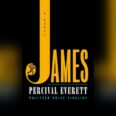

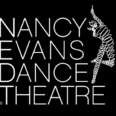






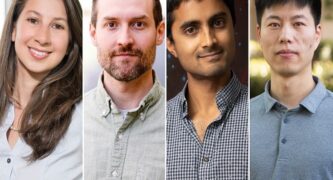

 3 comments
3 comments
